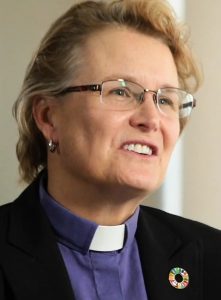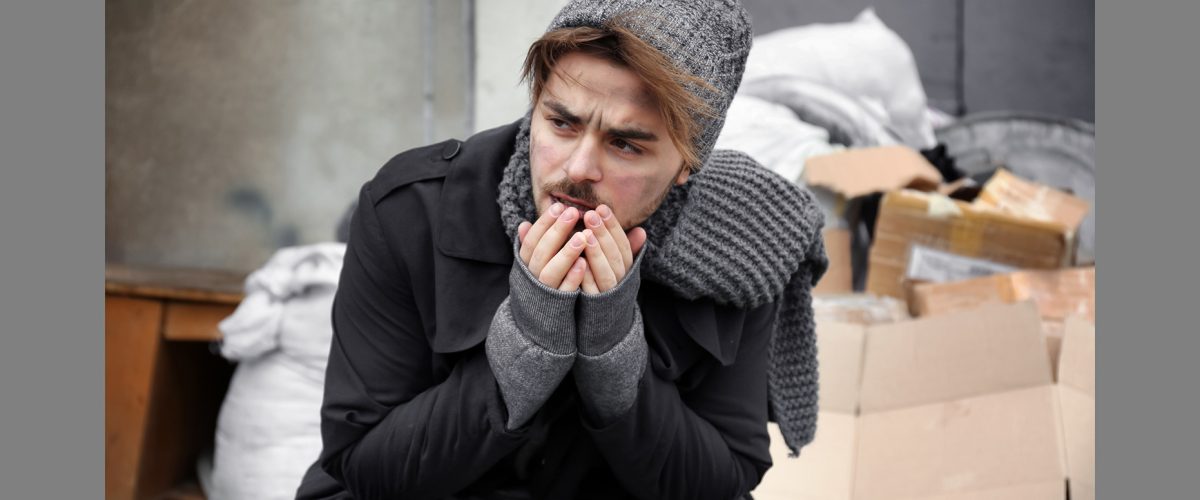The holidays may be winding down, but for some LGBTQ youth, year-end celebrations mark the beginning of a very different season: experiencing homelessness.
According to Marian Edmonds-Allen, executive director of Parity NYC, a faith-based organization focused on healing divisions between LGBTQ and faith communities, the holidays statistically mark an uptick in LGBTQ youth homelessness.
Although it can be difficult or impossible to quantify the impact of the holiday season on homelessness numbers, Edmonds-Allen said she sees about a 50% spike around this time of year.
“Myriad studies confirm that queer youth disproportionately experience homelessness.”
Myriad studies confirm that queer youth disproportionately experience homelessness. According to the Trevor Project, 28% of LGBTQ youth experience homelessness or housing instability, with unhoused youth having “two to four times the odds of reporting depression, anxiety, self-harm, considering suicide and attempting suicide compared to those with stable housing.”
The National Network for Youth, an organization focused on “preventing and eradicating youth homelessness in America,” lists family conflict as “the primary cause of homelessness for LGBTQ youth.” The organization notes such conflicts are “disproportionally due to a lack of acceptance by family members of a youth’s sexual orientation or gender identity.”
A perfect storm
Edmonds-Allen says the holidays can create a perfect storm of conditions that contribute to the risk of homelessness for LGBTQ youth. “Unfortunately, it’s the major holidays that are the time when especially trans young people, but LGBTQ young people, as well, experience distress because of family rejection,” she said.

Marian Edmonds-Allen
Extended family gatherings often escalate tensions that previously percolated below the surface. Edmonds-Allen said a typical scenario involves parents who worry about how visiting relatives may respond to teens who are beginning to experiment with gender expression.
“Parents are thinking about, OK, we’re going to have a big family dinner … and they think about, well, Aunt Vera is going to come to the dinner and you know how she feels about those people. And Johnny is starting to wear these clothes we don’t approve of and Aunt Vera is not going to like that,” she explained. “So the parents start to think that through and then things that have been simmering start to bubble and then it turns into an angry situation. Then it’s, ‘Johnny, why don’t you just get out of here and go straighten up for a while?’”
Suddenly “a kid will have five minutes to pack a backpack or whatever and then they’re on the other side of the door of the family home trying to figure out what to do and it’s Christmas Eve,” Edmonds-Allen said. That’s when “suicidal ideation and terrible things come to mind for LGBTQ young people.”
But situations that fall short of being kicked out still can have a big impact on queer teens’ mental health. For example, a family argument or traumatic dinner can have a lasting impact.
“The complicated relationships we have with our families can sometimes leave us feeling raw, overwhelmed and upset during and after the holidays,” writes Kinzie Sparks in a blog for the Trevor Project.
A hopeful trend
But Edmonds-Allen said she’s beginning to see a hopeful shift in trends. “Parents are reaching out to me, and Parity, and other organizations and saying, ‘You know, I love my child. Maybe I don’t understand, maybe I don’t agree, but I love my child. What can I do?’” she said.
These conversations are great opportunities to problem solve with families, Edmonds-Allen said. She encourages parents to strategize and think ahead, ideally with their child, about how to handle problems before they come up. This sort of strategizing might include brainstorming answers to questions that might arise or coming up with a code phrase a teen can use if they need a little space.
Parity also attempts to match struggling parents who may be on the verge of kicking their teen out with accepting, affirming parents from their same faith denomination or tradition. Providing parents with peers gives them a safe space to ask questions and get “a loving response that helps to keep the child safe,” Edmonds-Allen said.
“This is new, but I’m seeing it more and more and I credit the traditional pastors and faith leaders who are being really careful about their language from the pulpit.”
Interventions such as these require a level of acceptance on the part of the family, something Edmonds-Allen says is on the rise, especially from religious parents. “This is new,” she said, “but I’m seeing it more and more and I credit the traditional pastors and faith leaders who are being really careful about their language from the pulpit.”
“I have a lot of conversations behind the scenes with pastors and faith leaders who ask me, ‘What words should I use?’ or ‘How should I talk about this?’ Some of these pastors and faith leaders are affirming themselves and they know their congregations aren’t ready to go there yet. So they’re preparing the ground for it and the people in the congregations are picking up on this.”
Edmonds-Allen says evangelical and other traditionally non-affirming churches are “the folks who really are making the greatest strides right now.” She says it’s important for people to understand this shift in the conversation because hearing that other churches are re-evaluating their approaches to the LGBTQ community will encourage them to look at the policies in their own congregations.
Prepared to help
Despite the encouraging trends, Parity is prepared to help teens who find themselves in trouble in the wake of a holiday gone awry. “We have a database of over 1,000 individuals all over North America,” Edmonds-Allen said. “So when we hear of a child who’s been kicked out or about to be kicked out, we have people who are nearby and ready to help get the child to safety, but also to prevent something from happening.”
Statistically, most homeless youth will be contacted by a predator or a trafficker within the first 36 hours they are on the street, she explained. Someone will lure them with a promise of a meal or warm bed “and then the young person will be injected with drugs and wake up in the back of a U-Haul trailer going to some place around the country where people want young homeless people for sexual reasons.”
Edmonds-Allen says affirming churches and even individuals can play key roles in protecting LGBTQ youth in their communities. A fellow congregant, a neighbor or a work colleague “with a child who is out or isn’t out” may offer “a friendly listening ear” or open their homes.
Asking queer youth questions about their faith can address an important, but overlooked need, she added. “I’ve noticed LGBTQ young people have this yearning for faith and don’t have the opportunity to talk about it because the cultural stigma around being LGBTQ and faith is like, you can’t talk about that. But that’s not true. LGBTQ young people are deeply spiritual and we need to be able to talk about it.”
Related articles:
When a teenager gets kicked to the curb by Christian parents | Opinion by Dan McGee and Linda Francis Cross
Couple helps parents of LGBTQ kids come out of the closet
Baptist church funds N.C.’s first homeless shelter for gay youth


